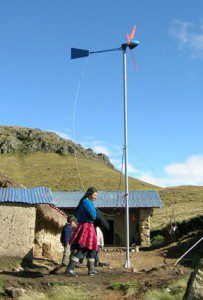
26 Oct EARTH MATTERS: BLOWIN’ IN THE WIND
 The iconic Bob Dylan song, “’The Times They Are A-Changin,’” touches upon the universal truth that change is constant. As humanity moves forward into the 21st century, we need to evolve (adapt) our way of life in order to reduce the risk of vulnerability, build resilience, and create opportunities for future generations. We cannot afford to go backwards to the “business-as-usual” economic environment of the 1920s with its “us versus them” social policies. Nor can we afford the “accommodate growth at any cost” environmental policies of the1950s, or the pre-emptive wars of the Bush era embraced by some political dinosaurs. Our Navy doesn’t want as many battleships as they had in 1916.
The iconic Bob Dylan song, “’The Times They Are A-Changin,’” touches upon the universal truth that change is constant. As humanity moves forward into the 21st century, we need to evolve (adapt) our way of life in order to reduce the risk of vulnerability, build resilience, and create opportunities for future generations. We cannot afford to go backwards to the “business-as-usual” economic environment of the 1920s with its “us versus them” social policies. Nor can we afford the “accommodate growth at any cost” environmental policies of the1950s, or the pre-emptive wars of the Bush era embraced by some political dinosaurs. Our Navy doesn’t want as many battleships as they had in 1916.
The path to the future is clear. The first step involves putting our egos aside, working collectively towards finding a global “common interest,” and fostering accountability by shifting our behavior from the self-serving “Me”, the lowest level of the human pyramid, upward to the peak of humanity, the global “We.” True to the vision of our Founding Fathers who fought for our freedom from the oppressive British conservatives, our great country needs to lead the world into the future instead of clinging to the past.
The way forward entails addressing the top ten problematic issues of humanity for the next 50 years, which involve social, economic, and environmental impacts related to combustion of finite fossil fuels, water scarcity, food security, environmental degradation, poverty, terrorism, disease, education, global inequality, and population growth. Except for population growth, the other nine categories could be addressed by developing alternative renewable energy sources such as solar, tidal, micro-algae biofuels, hydroelectric, geo-thermal, hydrogen produced from photosynthesis, ocean thermal energy conversion, and wind at a global scale in local context.
In developing countries that have limited existing energy transmission infrastructure and/or economic resources that generally feed large, economies of scale, renewable energy sources, small-scale wind power can serve as a viable solution. According to the Environmental and Energy Study Institute, “Small wind turbines have less generating capacity than the huge commercial turbines found on wind farms, but their reduced costs and added versatility allow wind power to be used in a wider set of applications.”
 The most effective application of small wind turbines involves generating electricity for off-grid, on-site use. However, in recent years, there has been a shift towards grid-connected systems that allow for individual wind energy producers to sell unused energy to regional utility companies.
The most effective application of small wind turbines involves generating electricity for off-grid, on-site use. However, in recent years, there has been a shift towards grid-connected systems that allow for individual wind energy producers to sell unused energy to regional utility companies.
Recent advances in horizontal axis wind turbine designs have resulted in increased efficiency, reduced noise, and smaller generators. Consequently, they are able to generate more power with fewer blade rotations per minute and sit atop towers that range from 30 to 140 feet, whereas utility-scale turbines may be 300 feet tall. Small turbines have a generating capacity between 0.3 to 100 kw/h depending on wind speed and duration but only need wind speeds of nine miles per hour at the height of the turbine to generate electricity.
In 2010, wind energy systems cost approximately $5,800 for every kilowatt of generating capacity. Depending on permit fees, installation cost, and local taxes, small wind turbine energy could cost less than solar energy systems per kilowatt. In addition, federal and state incentives such as the Federal Investment Tax Credit, Federal Production Tax Credit, USDA Rural Energy for America Program, and the Federal Residential Renewable Energy Tax Credit can significantly reduce initial costs and payback periods for small wind turbines.
Thus, a future of renewable energy is blowin’ in the wind.


Sorry, the comment form is closed at this time.